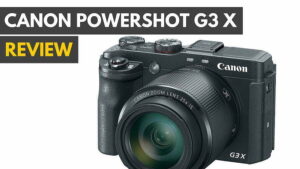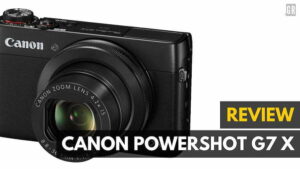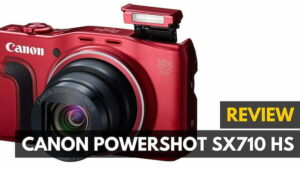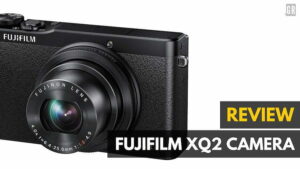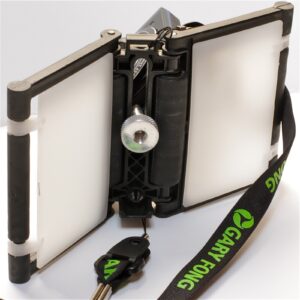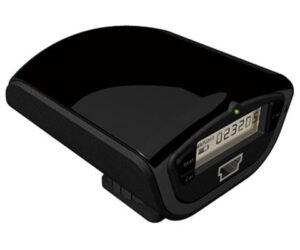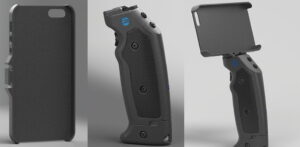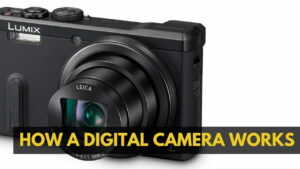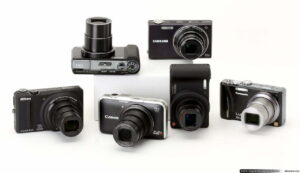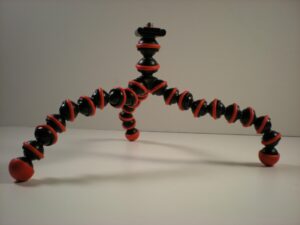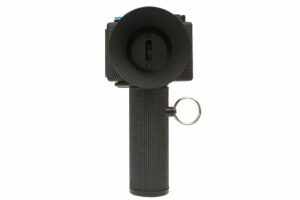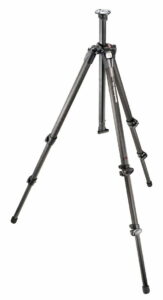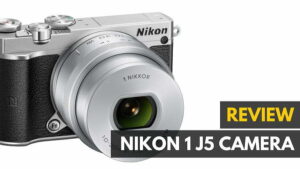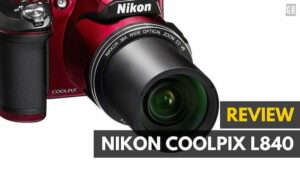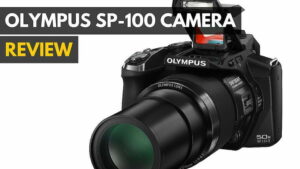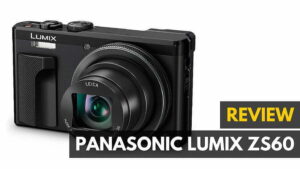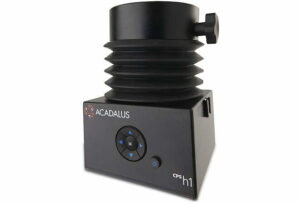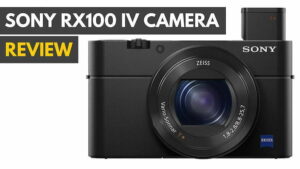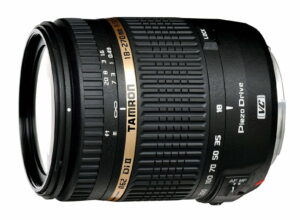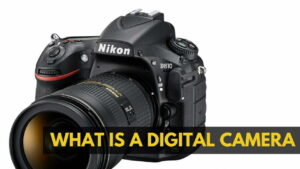Fujifilm has found a niche for its models in the mirrorless interchangeable lens camera (ILC) segment of the market, creating a handful of units that have a retro look and feel. But as my Fujifilm X-T10 review shows, the performance of this camera is anything but retro. The X-T10 is a camera with fast performance levels and strong image quality, especially against other mirrorless models. If you’re looking for another brand, check out this best digital camera list to find the one you want.
Photographers seeking a Fujifilm mirrorless camera often will consider the Fujifilm X-T10 vs. X-T1, as the two cameras have plenty of advanced features, which you can also find on other types like the Nikon Z50. The X-T1 is a far more expensive camera than the T10, offering weather sealing (proofing) and a larger electronic viewfinder screen. But the X-T10 Fujifilm still offers a lot of similarities to the costlier X-T1.
Overview
WHY IT’S A TOP PICK: Retro look of buttons and dials yields great manual control options.
Summary: With all of its dials and buttons, the Fujifilm X-T10 offers an interesting retro look, along with plenty of manual control options, all in a camera that produces vibrant and sharp image quality.
Price: $899 from Amazon (with kit lens)
Available: May 2015
Model: X-T10
What We Liked
- Well above average image quality in nearly all conditions, including low-light photos
- Camera operates quietly
- Plenty of easy-to-use features for an interchangeable lens camera
- Camera’s autofocus system works fast and accurately
- Lightweight camera, but still has a sturdy design and feel
What We Didn’t
- Video features and quality could be better; video recording button is too small
- No touchscreen display
- Maximum ISO setting is limited to 6400 in RAW image format (51200 in JPEG)
- Battery life could be better
- Price is at high end of mirrorless market
Fujifilm X-T10 Specs
| Image Sensor Type | APS-C (23.6 x 15.6 mm) |
| Megapixels | 16.3 |
| Optical Zoom Lens | NA, uses interchangeable lenses |
| LCD Tiltable Screen | |
| Viewfinder | |
| HD Video | |
| ISO | 100-51200 |
| Avg Battery Life | 350 photos |
| Weight | 13.4 oz. |
| Size | 4.7 x 3.3 x 1.6 inches |
| Price | $899 (with kit lens) |
| Buy Now |
Design and Build
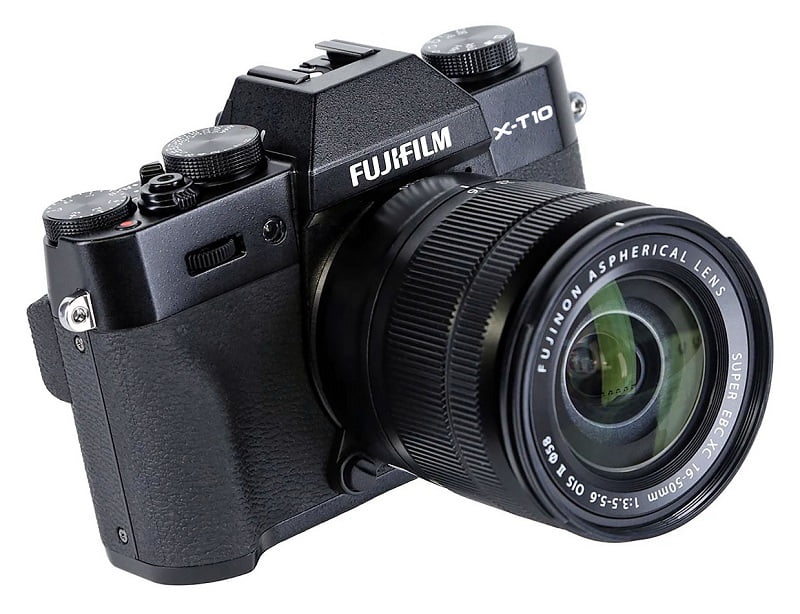
The Fujifilm X-T10 has a great-looking retro design that has become a calling card for the manufacturer in both mirrorless and fixed lens advanced cameras. In the photograph above, you can see the three dials on the top of the T10, which allow you to control the shooting mode, shutter speed, and exposure valuation on this best FujiFilm camera. Having dials to control these settings is great, because you can twist the dials much faster than you can work through an on-screen menu to access the same settings. Such dials are similar to how photographers controlled film cameras.
If you’re interested in cameras with dials, read our GE Power Pro X500 and our Olympus OM-D E-M10 Mark II review.
Fujifilm typically provides a Q button with its advanced digital cameras, which is a shortcut to commonly used camera settings, and the X-T10 has this button on the back of the camera, making it easy to adjust settings that don’t have dedicated dials or buttons. For another model, read our Fujifilm digital camera.
Related: Check out our Canon PowerShot SX740 HS review
Two other aspects of this model that simplify its operation are the tiltable LCD screen and electronic viewfinder. You can select whichever method you want to use to frame the particular scene you’re facing, which gives the X-T10 plenty of versatility.
Read through a Fujifilm X100T review, and you’ll find another advanced camera from Fuji that has a similar price point to the X-T10. But the X100T’s design is a fixed lens model that contains a prime lens (meaning it has no zoom capability), whereas the T10 makes use of interchangeable lenses, offering more flexibility.
Image Quality
Many of Fujifilm’s mirrorless cameras make use of the same APS-C sized image sensor found in the X-T10. There’s a reason Fujifilm continues to use this image sensor in a variety of its cameras: It’s a reliable, functional image sensor that produces outstanding images in a variety of conditions, even if its resolution count of 16.3 megapixels is a little dated.
The X-T10 is a fast performer, thanks to its 77-point autofocus system and a burst mode of up to eight frames per second in the JPEG image format. You can shoot in either the JPEG or RAW image format with this model. In manual focus mode, the zoom can be adjusted by rotating the rear command dial and the wide tracking modes allow the user to track subject movement across a large 77-point area, significantly improving the camera’s ability to capture moving targets.
Related: See our Fujifilm XQ2 review
Another interesting imaging option available with most advanced Fujifilm cameras, including the T10, is a film simulation mode. You can apply an effect to the digital images that simulate classic film types from the past, which is a great effect to find in a camera that has a design reminiscent of old film cameras, such as the X-T10.
When reading a Fujifilm X-T1 review, you’ll see another strong mirrorless camera that often is compared and contrasted against the X-T10 (as mentioned above). The T1 is a much more powerful camera, offering better recording speeds than the X-T10, especially in RAW image format shooting. But in terms of image quality, both cameras have the same type and size of an image sensor, resulting in very similar image quality.
A Fujifilm X-T10 vs. Sony A6000 comparison is another common one that those considering the X-T10 make. The A6000 provides 24.3 megapixels of resolution to the 16.3 megapixels found in the X-T10, but the Fujifilm model’s individual pixels on the image sensor are larger in physical size than the Sony camera’s pixels, giving the X-T10 better low light image quality than the A6000. Both mirrorless cameras have a similar price point.
Low Light Performance and Movie Mode
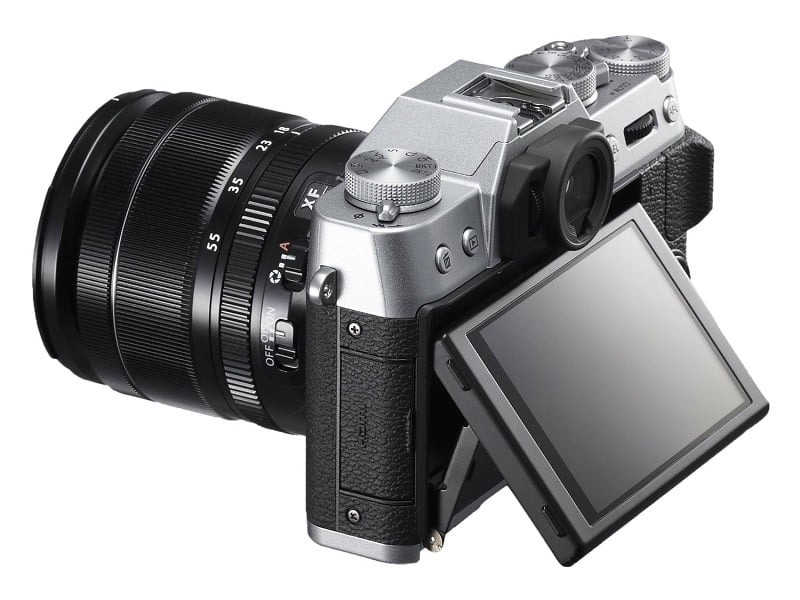
Low light image quality is good with the Fujifilm X-T10, at least up to a point, with a sensitivity range of ISO 200-6400. The image sensor produces good results up to an ISO of 6400, but you’ll find significant noise when you increase the ISO beyond 6400 when shooting in JPEG. That’s part of the reason why you’re limited to an ISO setting of 6400 when shooting in RAW.
Shooting movies is a bit of a disappointment with the X-T10. Although the camera body has a dedicated movie recording button, it’s too small to be easily pressed when you’re in a hurry, meaning you may miss the start of a video from time to time, as you attempt to press the button.
You can record full HD movies with this Fujifilm model at frame rates of up to 60 frames per second. However, the X-T10 doesn’t offer many options for adjusting the movie recording settings manually, which may disappoint some serious videographers, who want full control.
Battery Life
Fujifilm estimates that the X-T10 mirrorless camera can record about 350 shots per battery charge, although real-world battery testing shows more like 300 shots per charge. Battery life is an area where the XT10 matches the mirrorless Fujifilm XT1, XPro2, and XE2S, as all four cameras use the same battery.
Kit Options
The Fujifilm X-T10 is available in either black or silver with a variety of kit options. You can purchase the body-only set or have it fitted with either a Fujinon 16-50mm f/3.5-5.6 OIS lens or a Fujinon 18-55mm f/2.8-4 R LM OIS lens. Though the f/2.8-4 R LM OIS lens upgrade will cost you roughly an extra $200.
But thanks to the interchangeable lens, you’re free to look at other options. Consider paring the T-X10 with the XF23mm f/1.4, the XF 14mm f/2.8 R, the XF 16mm f/1.4 R WR, or the XF 27mm f/2.8.
Wrap Up
Read through any Fuji X-T10 reviews, and you’ll find a camera that has a great look and design, giving those who love the idea of vintage film cameras a nostalgic feeling. But it takes more than warm fuzzies to make a great digital camera. All of those extra dials and buttons may look great, but they’d better contribute to the camera’s ability to create images with tremendous quality. Fortunately, Fujifilm didn’t forget about this aspect of the X-T10. It does a very good job of recording well above average image quality, while providing all of the manual control features you could want.
Although it’s a pricey mirrorless interchangeable lens camera versus models from other manufacturers, it does cost less than some other Fujifilm retro-looking mirrorless options. If you can fit this model in your budget, there are a lot of things to like about it.
![10 Best Digital Cameras For Filmmaking in [year] 1 Best Digital Camera For Filmmaking](https://www.gadgetreview.dev/wp-content/uploads/best-digital-camera-for-filmmaking-300x169.jpg)
![10 Best Digital Cameras For Kids in [year] 2 10 Best Digital Cameras For Kids in [year]](https://www.gadgetreview.dev/wp-content/uploads/Fujifilm-FinePix-XP80-Waterproof-Digital-Camera-750x750-1-300x300.jpeg)
![10 Best Fujifilm Cameras in [year] 3 10 Best Fujifilm Cameras in [year]](https://www.gadgetreview.dev/wp-content/uploads/best-fujifilm-cameras-scaled-1-300x129.jpg)
![10 Best Medium Format Digital Cameras in [year] 4 Best Medium Format Digital Camera|Mamiya 645-AFD III Medium Format SLR Autofocus Camera|Leica S Typ 007 Medium Format DSLR Camera](https://www.gadgetreview.dev/wp-content/uploads/best-medium-format-digital-camera-scaled-1-300x169.jpg)
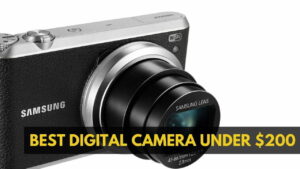
![Best Digital Cameras for Beginners in [year] 6 Best Digital Camera for Beginners](https://www.gadgetreview.dev/wp-content/uploads/bestdigital-camera-for-beginners-300x169.jpg)
![Best Instant Film Camera in [year] ([month] Reviews) 7 Best Instant Film Cameras](https://www.gadgetreview.dev/wp-content/uploads/best-instant-film-cameras-300x200.jpg)
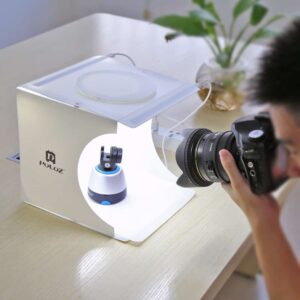
![Best Travel Camera in [year] ([month] Reviews) 9 A list of top travel cameras](https://www.gadgetreview.dev/wp-content/uploads/best-travel-camera-300x169.jpg)
